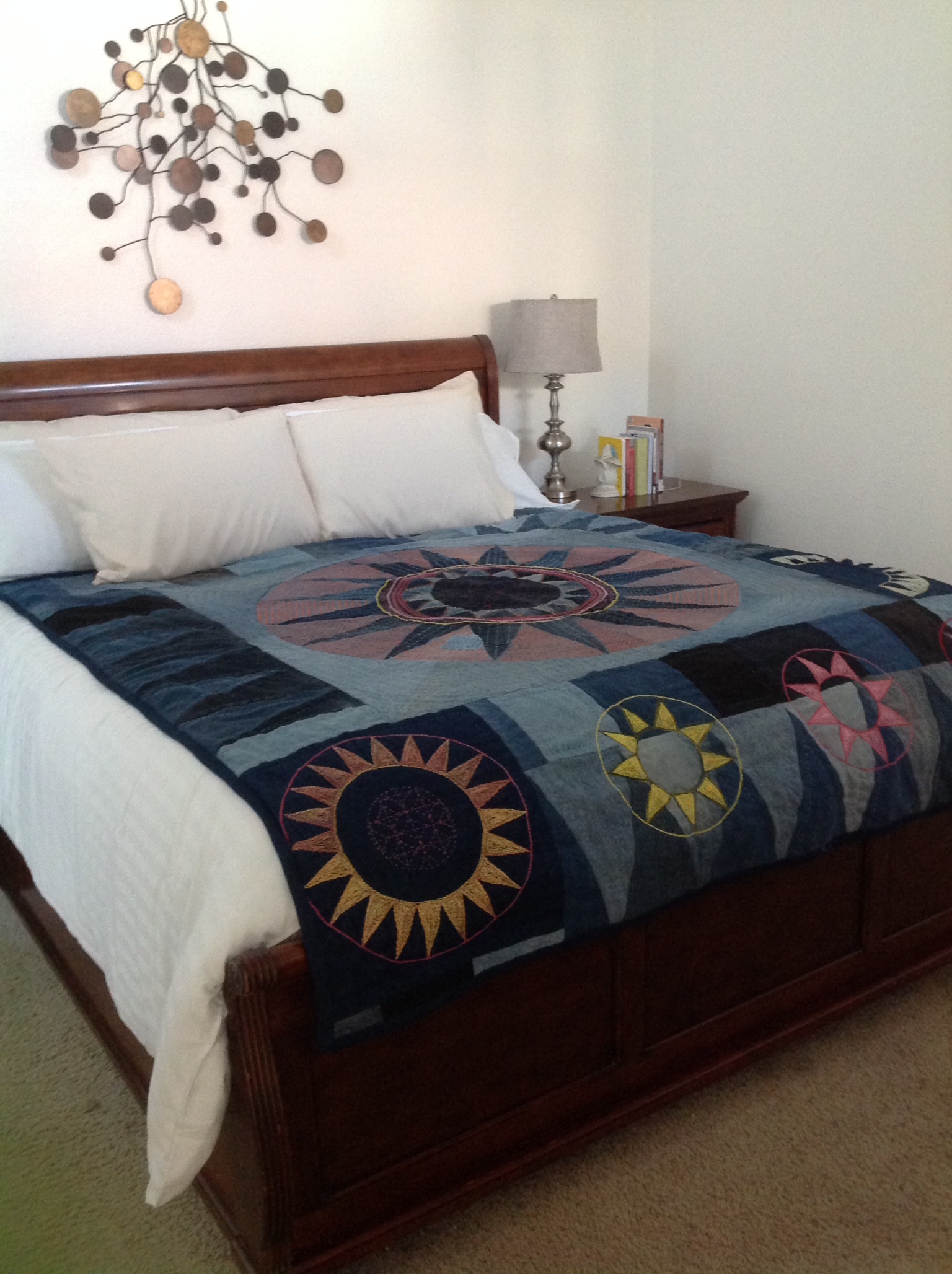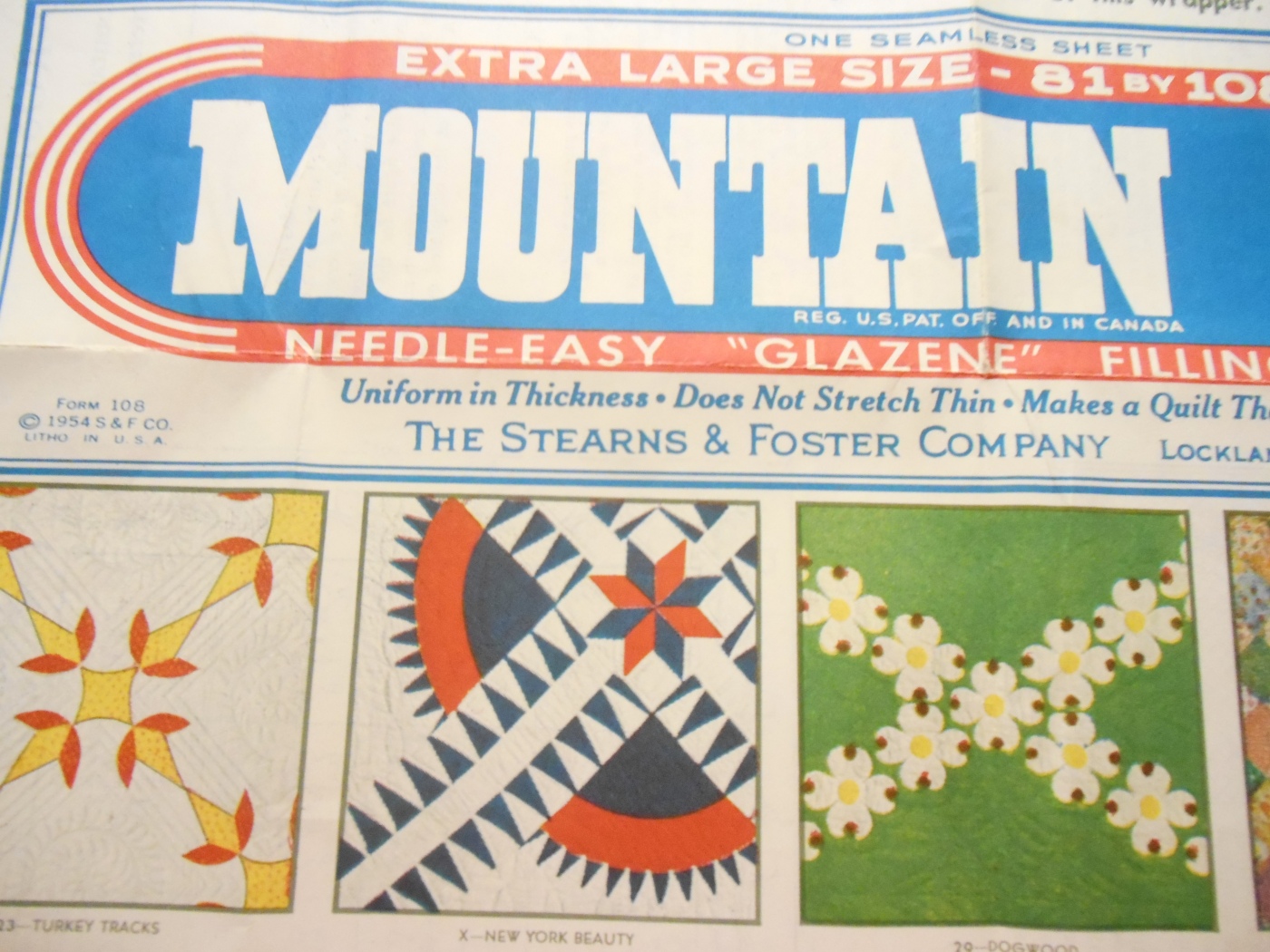History of the
New York Beauty Quilt
When looking at vintage quilts, I often wonder where the name come from because the pattern don’t seem to lend itself to the name. In the 1990’s, quilt historians registered every heirloom quilt they could through individual state projects. They documented them in photographs and through recording family provenance. Because of that research they were able to answer some questions about the histories of some of the patterns. The “New York Beauty” is one of those old patterns that always stick out with questions.

The practice of quilting begun in earnest after fabric production started in 1820’s. Fabric was very precious because it was expensive to buy and laborious to make before that. Once domestic fabric was available women began making bedding with it. The English and Dutch brought quilting to this country as a way to make warm under clothing by layering fabric with wadding in the middle. By the 1830’s the production of fabrics included prints. Cotton and wool was cleaned and carded for the wadding and place between a pieced together fabric tops and bottoms. Quilting stitches was done in a straight line close together to hold the wadding in place.
Stearns and Foster began making cotton batting for quilting in 1846 in Cincinnati, Ohio. It was clean and seedless that came in large sheets. Quilting became a homemaking basic skill in North America. Even the poor households would use scraps and fabric from clothing that was not worn out. Quilting was an opportunity to make something pretty for the bed to decorate the room. I think it was done for the same reason it is pursued today, to do something creative and artistic. The New York Beauty pattern used up many very little scraps of fabric that would normally could not be used for anything else. This pattern was usually chosen for a good quilt used only for guests because it showed off the sewing skills of the maker.
When the state quilt projects was finished very few 19th century quilts in the North East was found as the New York Beauty pattern. So it turned out not to be a pattern popular in the New York region. Many examples was found in the south. Most of the quilts had other names that the families called them like “Crown of Thorns,” Rising Sun,” Rock Mount” or “Rocky Mountain.” The states in the Texas region this pattern was called “Polk in the White House” or “Polk Dallas Texas.” According to Barbara Brackman,James K. Polk and George M. Dallas ran for president and vice president in 1844 as Democrats against Henry Clay a Whig. They ran on a platform to annex Texas in the union. This pattern may of started as a political statement by grateful women over the annex because the earliest quilt with this pattern was recorded in 1849. This has been a pattern favored by the Daughters of Tennessee. That makes sense because Polk was from West Tennessee. Texas entered the union as a slave state so this pattern remained popular in the south. Brackman also points out that in 1913, McCall’s Magazine called this pattern “Polk in the White House.” “Crown of Thorns” and “Rocky Mountain” was the most common names of the quilt pattern from the States Quilt Project.
So why was it now called New York Beauty? It turns out that Stearns and Foster Company started putting pattern instructions in their Mountain Mist Cotton Batting in the 1920’s to boost it’s sales. They renamed some of the patterns for the Colonial Revival popular at the time. The New York Beauty was one of those early full size patterns offered rolled in the batting. The Streans and Foster pattern features LeMoyne stars in the cornerstones and the blocks are set on the diagonal. The suggested color in the pattern was yellow, orange and white or red, white and blue. The spikes in the pattern was fatter and fewer then the older quilts with a double border in the quarter circle of orange and yellow. The spikes are usually in the older quilts not cut off at the points and the opposite piece is extended in the circle so the points look like they they are long fine points floating. The Mountain Mist pattern also added to the myth of Colonial quilting by claiming the pattern dated all the way back to 1776.

